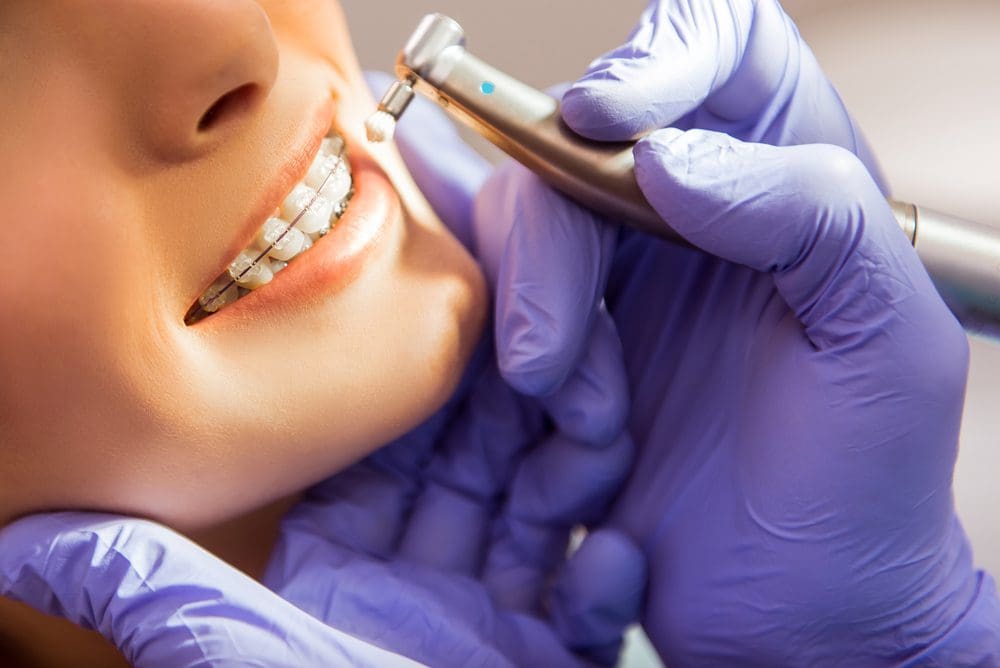Comprehensive Guide to Orthodontics Treatments for Fixing Oral Misalignments
In the world of orthodontics, the trip to accomplishing a flawlessly aligned smile entails a myriad of treatments customized to fix dental imbalances. From typical braces to invisible aligners and also medical options, the field of orthodontics provides a variety of remedies to address varying degrees of oral abnormalities. Recognizing the intricacies of each procedure, including their systems, advantages, and possible drawbacks, is critical in making educated decisions concerning one's orthodontic therapy. As we navigate through the extensive guide to orthodontic treatments for fixing dental misalignments, the elaborate details of each technique will unravel, clarifying the course towards a useful and harmonious dental positioning.
Orthodontic Procedures Introduction

Along with clear aligners and conventional dental braces, orthodontists may also advise other treatments like headgear, palatal expanders, or retainers to attend to specific placement concerns (braces). These treatments are tailored to every person's distinct demands and might involve a mix of therapies to achieve the preferred outcomes. Regular changes and tracking are essential parts of orthodontic therapy to ensure development gets on track and to make any kind of needed modifications along the method. By undertaking orthodontic procedures, clients can not only attain a straighter smile however additionally improve their overall dental wellness and feature.
Conventional Braces: Exactly How They Work
When thinking about orthodontic treatments for dental imbalances, conventional braces stand out as a reliable technique for correcting teeth placing. Standard braces are composed of brackets, cords, and bands that collaborate to use continuous stress on the teeth, progressively relocating them into the wanted positioning. The brackets are connected to the teeth making use of a special adhesive, and the wires are threaded via the brackets. By changing the tension of the cables, orthodontists can regulate the direction and pressure put on each tooth, leading them into proper placement in time.
As stress is applied to the teeth via the braces, the bone surrounding the teeth is improved to support the new tooth placements. Individuals will require routine modifications at the orthodontist's workplace to make sure the dental braces proceed to use the correct pressure for effective teeth movement.
Undetectable Aligners: Benefits And Drawbacks
These clear, customized trays are virtually unseen when used, making them an appealing alternative for individuals seeking a more cosmetically pleasing orthodontic treatment. Patients can get rid of the aligners before consuming or brushing their teeth, minimizing the threat of food getting stuck in the appliance and streamlining the cleaning procedure.

Surgical Orthodontic Options
Surgical treatments in orthodontics existing feasible alternatives for addressing complex dental misalignments that may not be efficiently solved via standard orthodontic therapies. While undetectable aligners and standard dental braces can remedy lots of orthodontic problems, specific situations require medical treatment to attain optimum outcomes. Surgical orthodontic choices are usually suggested for serious malocclusions, substantial jaw disparities, and instances where the underlying bone framework needs modification to achieve correct placement.
One usual surgical orthodontic procedure is orthognathic surgery, which entails rearranging the jaws to fix functional issues such as trouble talking or chewing. This surgery is often executed in visit homepage partnership with an orthodontist who helps straighten the teeth before and after the treatment. Surgical orthodontics may also entail treatments to expose influenced teeth, eliminate excess gum tissue, or reshape the jawbone to create i thought about this an extra harmonious face account.
Prior to considering medical orthodontic choices, patients go through a comprehensive examination to determine the requirement and potential advantages of such treatments. cumming invisalign. While surgery might appear challenging, it can considerably improve both the function and appearances of the smile in cases where traditional orthodontic treatments fall short
Retainers and Post-Treatment Treatment

Post-treatment care includes following the orthodontist's guidelines vigilantly. This may consist of correct dental hygiene practices, going to follow-up consultations, and putting on the retainers as prescribed. Failure to adhere to post-treatment treatment directions can cause relapse, where the teeth slowly return towards their original settings. Regular retainer wear, excellent dental health, and routine oral exams are important for preserving the results achieved through orthodontic surgical treatment and ensuring the long-term security of the dealt with oral placement.
Final Thought
In final thought, orthodontic treatments provide numerous choices for correcting dental misalignments. Surgical orthodontic choices are available for a lot more severe imbalances. Overall, orthodontic treatments can efficiently boost dental health and visual look.
As we browse via the comprehensive overview to orthodontic procedures for remedying dental imbalances, the complex details of each technique will certainly unravel, shedding light on the course toward a functional and harmonious oral get more placement. - cumming aligners
One of the most common orthodontic therapies is the usage of braces, which consist of steel braces and wires that apply gentle stress to progressively shift teeth into the wanted position.When thinking about orthodontic therapies for oral imbalances, conventional braces stand out as a reliable technique for remedying teeth positioning. Furthermore, unseen aligners may not be appropriate for complicated orthodontic problems that call for even more significant teeth movement, as they are typically suggested for mild to modest instances. Retainers are custom-made orthodontic tools designed to hold teeth in their fixed settings after the conclusion of orthodontic therapy.